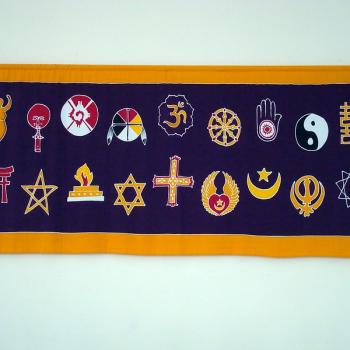There are three branches of Judaism: Reform, Conservative, and Orthodox. A similar breakdown is evident in other religious traditions: a liberal version, a conservative version, and an arch-conservative version.*
Thus, among Lutherans, we have the Evangelical Lutheran Church in America (liberal), the Lutheran Church Missouri Synod (conservative), and the Wisconsin Evangelical Synod (arch-conservative).** Presbyterians have the Presbyterian Church United States of America (liberal), the Presbyterian Church in America (conservative), and the Orthodox Presbyterian Church (arch-conservative). Baptists have the American Baptists (liberal), Southern Baptists (conservative), and Fundamental Baptists (arch-conservatives). Campbellites have the Disciples of Christ (liberal), First Christian (conservative), Church of Christ (arch-conservative). We could go on.
Roman Catholics, on the other hand, have always claimed to be unified. But liberal Catholic theologian Daniel Maguire says that Catholicism too is dividing into three similar streams. This has arguably already happened, even though all three are contained in one institution, as many converts have discovered when they become Catholics because of medieval theologians and 19th century acts of devotion, only to find themselves in a parish with feminist nuns and priests who sound just like mainline liberal Protestants.
Terry Mattingly discusses the phenomenon–including the growing authority of “conscience” in Catholic circles–in a column excerpted and linked after the jump.
*This taxonomy did not originate with me. Scholars tend to use the terms “liberal,” “conservative,” and “fundamentalist,” but that last term is too loaded except for groups, such as some Baptists, that embrace the term. One would expect a “moderate” category, but that faction seems to be distributed among the others.
**I suspect some of us in the LCMS would maintain that they are as conservative as it is possible to be in adherence to Scripture and to its exposition in the Book of Concord. They would say that the difference with WELS and ELS is over theology, such as the doctrines of the ministry and church fellowship, and that in regards to these issues and others, such as liturgical practice, the LCMS is more conservative than the other confessional bodies.
From Terry Mattingly: ‘Conscience’ becomes a key fighting word in Vatican synod – Go Knoxville Story:
Eyebrows were raised when progressive theologian Daniel Maguire of Marquette, amid tense debates about marriage, divorce and gay rights, wrote to The New York Times to argue that Catholicism is “going the way of its parent, Judaism” and dividing into three streams.
“In Judaism, there are Reform as well as Conservative and Orthodox communities. This arrangement is not yet formalized in Catholicism, but the outlines of a similar broadening are in place,” said Maguire. While the Vatican may tweak some procedures, such as streamlining the annulment process, “reform Catholics don’t need it. Their consciences are their Vatican.”
[Keep reading. . .]















